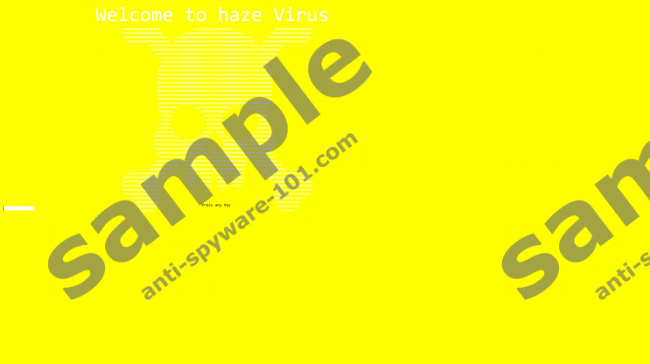What is Haze Ransomware?
Haze Ransomware is a screen-locker that poses as a file-encrypting infection. Although the notification that this threat displays suggests that your files were encrypted, that is unlikely to be the truth. Of course, by the time you are reading this report, the ransomware might have become capable of encrypting data, but that was not the case when our Anti-Spyware-101.com research team was analyzing this threat. We conclude that the infection presents bogus information to trick you into paying 25 Euros. You will not achieve anything by doing that, and so we do not recommend it. What we recommend doing instead is deleting Haze Ransomware. Although it appears that this infection locks the screen to prevent you from accessing your operating system and doing anything – including the removal of malware – unlocking the screen and then cleaning the operating system from malicious threats might be easy. If you are confused, read this report before you jump to the guide below. Also, note that you can add questions for our research team in the comments box below.

How does Haze Ransomware work?
You might not know this, but Haze Ransomware is not the first infection to pose as a file-encryptor. Such infections as Cryptodark Ransomware or Whycry Ransomware are known to display worrisome notes that indicate an alleged encryption of personal data. In reality, these threats cannot encrypt files at all. Unfortunately, things always change, and malicious ransomware threats can always be upgraded. Hopefully, that does not happen, and Haze Ransomware stays just as harmless as it is right now. The only thing it can do is lock your screen, but even that is not a permanent thing, and you can easily close the ransomware window after tapping keys Win+D. We recommend doing that as soon as you discover the suspicious notification. Once you regain access to the operating system, immediately check your personal files to see if they were not harmed. When files are encrypted, they are unreadable, and, in most cases, unique extensions are added to their names. In some cases, the names are also changed to make it more difficult to figure out exactly which files were encrypted.
When Haze Ransomware slithers in – most likely, via spam emails or RDP backdoors – it immediately introduces the victim to a flashing scull image followed by the “Press any key” alert. If the victim taps any key, the ransom note is shown, and this one suggests that personal data was “locked” and that only a “special key” can help recover it. It is suggested that you can get the key if you disclose your email address and a “Paysavecard” (it should say “Paysafecard”) code that represents the amount of €25. As you might know, Paysafecard is a money-transfer system that is based on codes you purchase for a specific fee. In the past, this system was heavily exploited by such infamous threats as JobCrypter Ransomware, Paysafecard Virus, Interpol Departament of Cybercrime Virus, and Metropolitan Police Virus. If you fulfill these demands, cyber criminals will have your email address, and they could use it to scam you in the future. When it comes to the ransom, you will not be able to get the money back once you pay it. Of course, no decryption key will be presented to you because your files are NOT encrypted. A fake key might be offered, and your Desktop might be unlocked when you enter it just to trick you into thinking that your files were recovered. Needless to say, you should not waste your hard-earned money.
How to delete Haze Ransomware
Have you decided to remove Haze Ransomware manually? If you have, you need to be cautious. If you know where the launcher of the ransomware is, you should not face any serious problems when erasing it. On the other hand, if you do not know where to look for the launcher, you have to be careful. After all, you do not want to erase harmless files, do you? If you are having issues identifying the infection, you can use a legitimate malware scanner to help you identify malicious threat, or you can install a legitimate anti-malware tool to have all threats erased automatically. Whatever you choose to do, you have to make sure that your operating system is clean. One single malicious file hidden from you could cause a lot of trouble. To keep such files away, employing full-time security software is important.
Removal Instructions
- Launch Task Manager by tapping Ctrl+Shift+Esc keys.
- Click the Processes tab, select the process named HazerRahsomeware.exe, and click End process.
- Identify the {random name}.exe file that is the launcher of the ransomware.
- Right-click and Delete the file (unfortunately, it could be located anywhere).
- Empty Recycle Bin and immediately perform a full system scan.
100% FREE spyware scan and
tested removal of Haze Ransomware*





0 Comments.